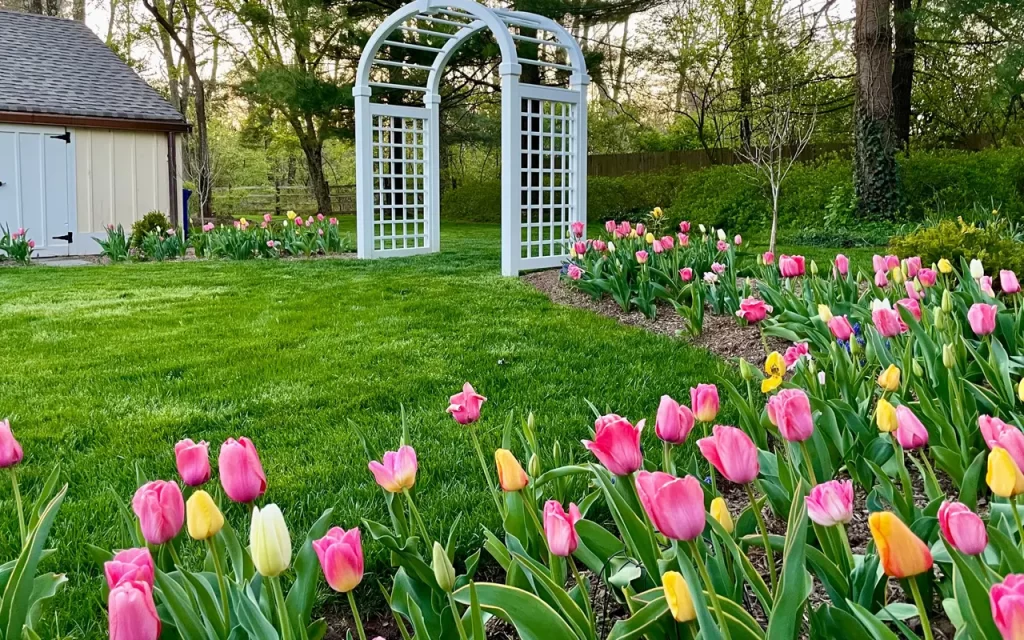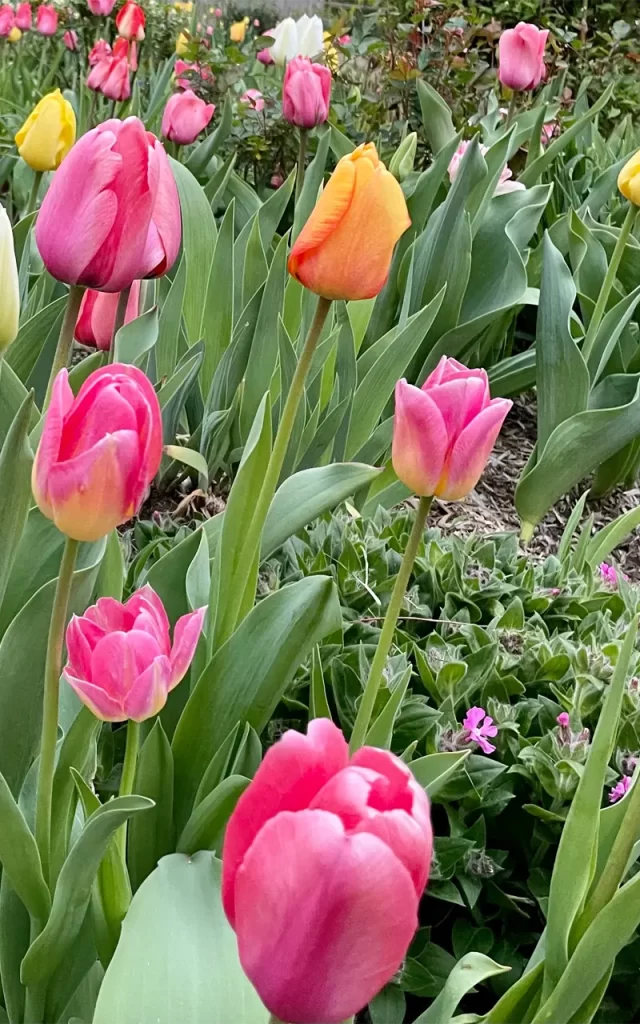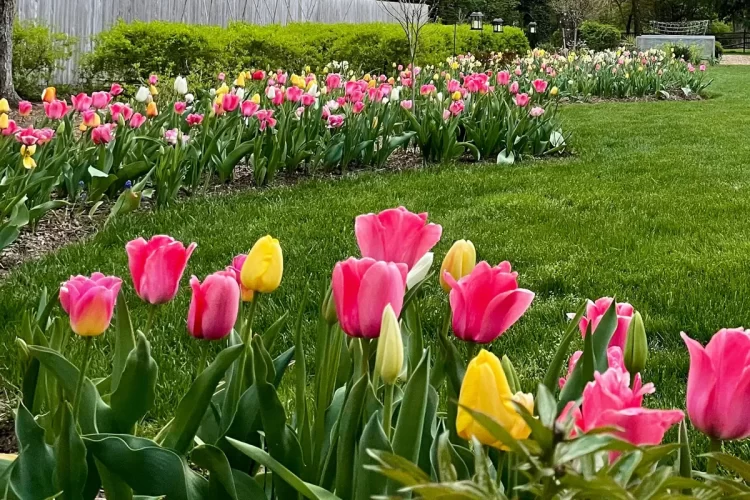Tulips are among the most loved spring flowers, known for their vibrant colors and elegant, cup-shaped blooms. While gardeners worldwide adore tulips for their beauty and versatility, there’s often confusion about whether tulips are truly perennial. This comprehensive guide delves into the nature of tulips, explaining their growth patterns, how to encourage perennial blooms, and why some tulips return year after year while others don’t.
Understanding Tulip Types: True Perennials vs. Annual Behavior
1. The Basics of Tulip Growth
Tulips, botanically known as Tulipa, are spring-blooming bulbs native to mountainous regions with temperate climates. Traditionally, they’re classified as perennials, meaning they should return and bloom each year. However, many gardeners find that their tulips fail to reappear with the same vigor after the first bloom, leading them to question their perennial nature. This behavior largely depends on the specific type of tulip, soil, climate, and care.
2. Types of Tulips and Their Perennial Potential
Not all tulips have the same growth pattern. Some varieties are more reliable perennials than others, while certain types are more suited to being grown as annuals due to their tendency to lose vigor after one season.
- Botanical or Species Tulips: These are true perennials that often thrive and multiply in well-suited environments. Varieties such as Tulipa tarda, Tulipa clusiana, and Tulipa kaufmanniana are more likely to return year after year with consistent blooms.
- Hybrid Tulips: Many popular varieties, like Darwin hybrids and Triumph tulips, are bred for color, size, and beauty but may act more like annuals. While they might return, they often decline in quality and quantity over successive years.
- Darwin Hybrids: Known for their large, vibrant blooms, Darwin hybrids are among the most perennial tulips and can often return for several years if given proper care.
- Fosteriana Tulips: Sometimes called Emperor tulips, Fosterianas are another variety with good perennial potential.
Why Don’t All Tulips Behave as Perennials?

1. Climate and Environmental Factors
Tulips are native to mountainous regions with cold winters and dry summers, conditions that aren’t always replicated in garden settings. Without a period of cold dormancy, tulips can struggle to store the energy needed to bloom in successive years.
- Cold Winters: Tulips need a cold winter dormancy period to rejuvenate and gather energy for the next growing season. Without at least 12-16 weeks of cold temperatures (around 35-45°F or 1-7°C), tulips may bloom sparsely or fail to return.
- Hot, Wet Summers: In regions with hot, wet summers, tulip bulbs are prone to rot or exhaustion, which diminishes their perennial potential.
2. Soil Quality and Drainage
Tulips require well-draining soil to thrive. Poor drainage can lead to bulb rot, while overly rich or nutrient-poor soils can impact their health.
- Soil pH and Texture: Tulips prefer slightly sandy, neutral to slightly alkaline soil with a pH of 6.0-7.0. Heavy clay soils can impede drainage, causing the bulbs to rot over time.
- Bulb Depth and Spacing: Planting bulbs at the correct depth (about 6-8 inches for most varieties) and spacing them 4-6 inches apart can help protect them from extreme temperatures and promote healthy growth.
3. Hybridization and Blooming Energy
Many modern tulip hybrids are bred for appearance rather than perennial growth. This hybridization process sometimes sacrifices the bulb’s ability to store energy for successive blooms.
- Energy Reserves: Tulips store energy in their bulbs, but if they expend all their resources in one prolific bloom, they may lack the reserves to return. Species tulips are better adapted to preserve energy for perennial growth.
- Cutting Flowers: If tulips are cut prematurely, especially with leaves attached, it limits their ability to photosynthesize and store energy, reducing the chance of returning blooms.
Best Practices for Perennial Tulip Care

While some tulips are naturally better suited to perennial growth, proper care can maximize the potential for many varieties to return and thrive in your garden.
1. Planting for Success
The foundation of a healthy tulip starts with planting. Aim to plant bulbs in the fall, about 6-8 weeks before the first hard frost.
- Choose Well-Draining Locations: Select a sunny spot with well-draining soil, ideally one that mimics the tulip’s natural environment.
- Spacing and Depth: Plant bulbs 6-8 inches deep and 4-6 inches apart. This depth protects them from temperature fluctuations and predators, while spacing improves air circulation.
2. Providing Winter Chill
For gardeners in milder climates, ensuring tulips receive adequate winter chill is essential for perennial growth. If natural conditions don’t provide sufficient cold, consider pre-chilling bulbs before planting.
- Pre-Chilling Bulbs: Store bulbs in a refrigerator at 35-45°F for 12-16 weeks before planting.
- Avoid Ethylene Exposure: Keep bulbs away from ripening fruits, as ethylene gas can inhibit their blooming capacity.
3. Fertilizing and Feeding
Tulips are moderate feeders, and while they don’t require excessive fertilization, a little boost can help them return stronger each year.
- Bulb Fertilizer: Apply a slow-release, balanced fertilizer like 10-10-10 at planting time. This provides essential nutrients as the bulbs establish themselves.
- Spring Feeding: Once shoots emerge in spring, a light top-dressing of compost or bulb fertilizer can encourage stronger blooms.
4. Post-Bloom Care
Post-bloom care is one of the most crucial steps in promoting tulips’ perennial growth. Deadheading and allowing the foliage to die back naturally are essential.
- Deadheading Blooms: Once flowers fade, remove the spent blooms to direct the plant’s energy back to the bulb.
- Letting Foliage Die Naturally: Allow the leaves to yellow and wither naturally, as this process enables the plant to photosynthesize and store energy for the next year’s bloom.
5. Avoiding Summer Watering
Tulips prefer a dry summer dormancy, which helps prevent bulb rot and mimics the natural summer drought of their native habitats.
- Reduce Watering: After the foliage has died back, reduce or stop watering to keep the bulbs dry.
- Soil Mulching: In very wet climates, consider lifting and storing tulip bulbs or adding a mulch layer to shield them from excess moisture.
Species Tulips: The Reliable Perennials
For gardeners who seek low-maintenance perennial tulips, species tulips are an excellent choice. These smaller, wild tulips retain their perennial nature and often spread, forming naturalized clusters.
- Tulipa tarda: Known for its star-shaped yellow and white flowers, this variety is both hardy and a dependable perennial.
- Tulipa clusiana: The Lady Tulip has delicate, narrow petals and grows well in naturalized garden settings.
- Tulipa sylvestris: Also called the woodland tulip, this variety’s bright yellow blooms are both hardy and fragrant.
Species tulips are often more adaptable and resilient than hybrid varieties, making them ideal for gardeners who want to enjoy perennial tulips with minimal effort.
In Summary: Ensuring Your Tulips Return Year After Year
While tulips are technically perennial plants, many hybrid varieties struggle to bloom beyond their first season without the right care. By choosing perennial-friendly species, providing suitable growing conditions, and following careful post-bloom and dormancy practices, you can enjoy the splendor of tulips in your garden year after year. For those who live in challenging climates, consider species tulips or adopting practices like bulb pre-chilling to ensure these beloved blooms return season after season.


